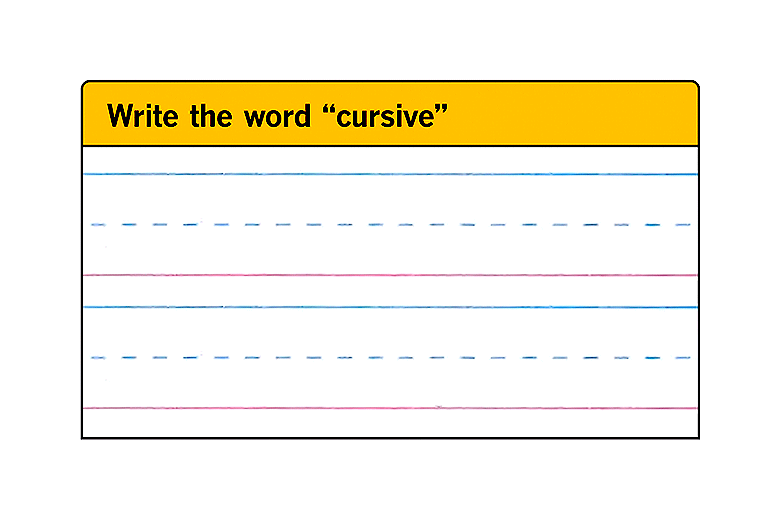Rx for Physicians’ Unhealthy Handwriting
- Share via
Hold onto your prescriptions. It looks as if some doctors are serious about improving their notoriously horrendous penmanship.
Since last year, more than 1,200 physicians--and counting--have sent away for a self-study program in italic handwriting.
“These doctors didn’t just call in to order the books like your normal person. They were calling to confess,” reports Tena Spears, a marketing representative for Portland State University’s Continuing Education Press, which publishes “Write Now,” a paperback containing the self-study program.
“These doctors really cared and wanted to talk about their handwriting problems. I personally never thought they cared. I thought they were just careless,” she adds.
The course teaches italic in two styles:
* Cursive italic, an elegant, “loop-free” style that looks like connected printing and could be described as the Jaguar of handwriting scripts.
* Basic italic, its lean, no-frills, less-connected cousin, the penmanship equivalent of a Honda Civic.
Italic proponents claim that either version produces letter forms that can be written quickly. And they say that, given its similarity to printing, italic is easier to decipher than “looped cursive,” the more ornate stuff most Americans have been taught to use.
The flood of physicians requesting the self-taught penmanship program occurred after a publication of the American Medical Assn. ran an article about the life-and-death consequences of doctor scribbling. The American Medical News article observed that there are “chilling stories” of delays in treatment, incorrect dosages and even fatalities, all because of rushed, illegible chicken tracks dashed off by physicians.
As an antidote, the story spotlighted the italic program created about a decade ago by calligraphers Barbara Getty and Inga Dubay of Portland, Ore.
Dr. Peter Reagan, a family practice physician who converted to italic writing about four years ago, says the style improved the legibility of his penmanship so much that he recently gave a copy of the program to the quality assurance committee at Portland Adventist Medical Center where he is on staff.
As the hospital’s outgoing chairman of the family practice department, a job in which he had to review a lot of medical charts, Reagan was also instrumental in instituting a new hospital regulation that will force offending physicians to do something about their penmanship atrocities.
“The people in medical records always giggled . . . about doctors’ handwriting,” he says. “Now we’re going to give them the discretion to order doctors to dictate any chart note that can’t be read.”
How bad is the problem?
“We don’t even try to read some of the handwriting of our physicians,” Reagan admits. “In some cases, all we know comes from the notes the nurse puts in the chart and the typed summaries that are dictated. . . . Obviously mistakes can get made. Nurses can take orders off wrong and do things that weren’t supposed to be done. There are major legal problems because some doctors can’t read their own notes from years earlier.”
Not to mention the personal difficulties patients may endure.
“The most bizarre case I know of was a case where a pharmacist gave a woman a potassium supplement instead of birth control pills,” says Reagan. “It was a very sobering experience for the people involved.”
Though Reagan is unaware of any major calamities resulting from his own, formerly hard-to-read writing, he acknowledges “there was a lot of grumbling” about it.
But his decision to improve his penmanship was not premeditated. Indeed, he came across italic writing by accident--when he objected to his son having to learn new letter forms in the seventh grade.
“My son was extremely upset and justifiably so,” recalls the physician. “He was being required to write in the new script. Homework that might normally take him a half an hour took four hours. I went to his teacher to complain and was told that the kids were learning it because it was faster to write and easier to read. Something about that rang a bell.”
Reagan bought a book on the home-study program and spent about 10 days practicing the script. “The first couple of weeks I used italic were really painful. When I did rounds the first week it would take me 20 minutes to write up the notes on a case as opposed to about three minutes,” he recalls, adding that his speed has improved to the point where it is now only slightly slower than his old, hard-to-read “scrawl.”
“I can write extremely legibly now if I just take a little bit of time. I used to think it was hopeless.”
Though italic writers are still a tiny minority in this country (the writing style is reportedly widely used in Scandinavia and the United Kingdom), their U.S. ranks are growing, according to Inga Dubay, co-author of “Write Now” and other books on italic.
A program she and her partner developed for elementary schools is now taught in about 500 schools throughout the country, most of which are in Oregon and three of which are in California. Dubay also says that textbook commissions in Oregon, Idaho, Utah, Arizona and California have approved Getty/Dubay books for schools that wish to purchase them with state funds.
In addition, “Write Now,” the duo’s recently published self-teaching program/book for adults, has nearly sold out its first printing of 6,000 copies and a second printing of 20,000 copies is scheduled for next month.
Reagan, for one, hopes that the program will catch on, particularly with more doctors. He suspects their poor handwriting can be attributed to the harsh demands they typically withstand during medical training.
“In the third grade, I got Cs in handwriting, but it got much less legible when I was in medical school,” he remembers. “Your job is to take care of people. You don’t take the act of writing it all down very seriously, especially not at 4:30 in the morning. You just get it over with so you can get home and go to bed.”
The doctor dismisses the idea, suspected by at least a few patients, that physicians intentionally write illegibly so patients can’t read their own charts, prescriptions or medical records.
“That’s paranoid,” he insists. “It’s more innocuous than that. I also don’t think it’s done to keep people from forging prescriptions. None of us would work that hard at disguising handwriting.”
More to Read
Sign up for Essential California
The most important California stories and recommendations in your inbox every morning.
You may occasionally receive promotional content from the Los Angeles Times.













